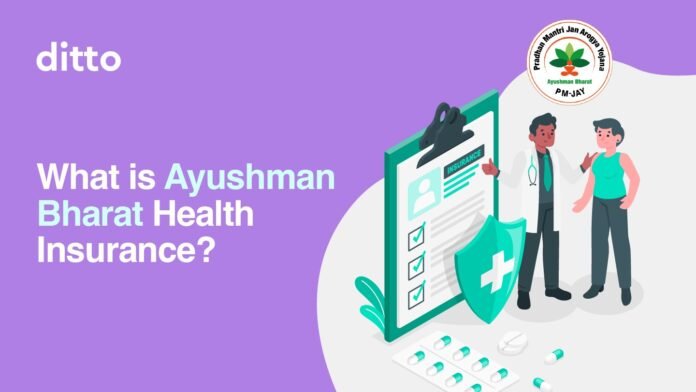The Ayushman Bharat-Pradhan Mantri Jan Arogya Yojana (AB-PMJAY) has been expanded to cover senior citizens aged above 70. This expansion marks a crucial step toward ensuring comprehensive health insurance for one of the most vulnerable sections of the population. With a special focus on the elderly, the government is not only addressing the growing healthcare needs of an aging population but also making strides toward achieving universal healthcare for all.
Ayushman Bharat: An Overview
Launched in September 2018 by the Government of India, Ayushman Bharat is one of the world’s largest government-sponsored health insurance schemes. The program provides health coverage of up to ₹5 lakh per family per year for secondary and tertiary care hospitalizations. It aims to benefit over 100 million families across India, targeting the economically disadvantaged.
AB-PMJAY is designed to be a cashless and paperless system at public and private hospitals. The scheme covers around 1,350 medical packages, including surgeries, hospitalization, and post-hospital care. It is managed by the National Health Authority (NHA), and the primary objective is to reduce the financial burden of healthcare on low-income households.
The Expansion: Why It Matters
The decision to include citizens aged above 70 into the scheme comes at a critical time, as India’s elderly population is growing rapidly. According to the National Statistical Office, India’s elderly population is expected to increase from 138 million in 2021 to 194 million by 2031, putting significant pressure on the healthcare system.
Elderly individuals face a higher risk of chronic diseases like diabetes, hypertension, cardiovascular diseases, and cancer, which often require expensive, prolonged treatments. Additionally, they tend to have a greater need for emergency care, surgeries, and post-operative support, which can be a substantial financial burden on families, especially those from lower-income groups.
Expanding the coverage under Ayushman Bharat to the elderly above 70 aims to reduce out-of-pocket expenses, which can drive households into poverty due to high healthcare costs. This step is expected to bridge the gap between healthcare needs and financial accessibility for senior citizens, providing them with much-needed security.
Key Features of the Expansion
- Increased Healthcare Access: The extended coverage will ensure that elderly citizens, who often require frequent and advanced medical care, can access a wider range of treatments, including chronic disease management, surgeries, and rehabilitation services.
- Specialized Geriatric Care: With the inclusion of older citizens, the government is also focusing on enhancing geriatric care services under the scheme. This includes the management of age-related disorders such as Alzheimer’s, arthritis, and mobility issues, which are often neglected in conventional healthcare frameworks.
- Preventive Healthcare: A key component of the expansion is preventive care, which will help detect diseases at an early stage. Regular check-ups, screenings, and consultations can prevent many conditions from worsening, thus reducing the need for expensive treatments later.
- Access to a Larger Network of Hospitals: The scheme covers both government and private hospitals, and elderly patients will have access to the same vast network of healthcare providers. This includes top-tier hospitals across the country, ensuring that even people in rural areas can receive specialized care.
Addressing Potential Challenges
While the expansion of Ayushman Bharat is undoubtedly a positive development, it does come with its own set of challenges that need to be addressed for the scheme to function effectively:
- Healthcare Infrastructure: India’s healthcare infrastructure, particularly in rural areas, still faces significant gaps. While the inclusion of elderly citizens increases demand, it is vital to ensure that hospitals, especially those in tier-2 and tier-3 cities, are adequately equipped to handle this new patient load.
- Awareness and Outreach: Many eligible beneficiaries of the scheme are still unaware of its benefits. The government needs to invest in raising awareness, especially among the elderly and their caregivers, to ensure that the expanded coverage reaches those who need it most.
- Quality of Care: Ensuring quality control across a network of public and private hospitals is essential. The government must enforce stringent quality assurance protocols to ensure that the elderly receive the best possible care under the scheme.
- Sustainability: The financial sustainability of the expanded scheme could be a concern. As the number of beneficiaries grows, maintaining the level of funding and ensuring that it doesn’t compromise the quality of services is a challenge that the government must address.
Future Prospects
The expansion of Ayushman Bharat to include senior citizens above 70 aligns with India’s larger goal of achieving universal healthcare by 2030. It sets a precedent for other health programs to focus more on the elderly population, who are often underserved in terms of specialized healthcare.
In the long run, this move could also encourage private insurers to introduce more affordable and comprehensive health plans tailored for the elderly. It may also promote public-private partnerships to further strengthen the healthcare infrastructure.
The expansion of the Ayushman Bharat scheme to cover citizens aged above 70 is a major step forward in addressing the healthcare needs of India’s aging population. By providing health insurance to this vulnerable group, the government is not only reducing financial barriers to healthcare but also promoting a healthier, more secure aging process for millions of Indians. However, the success of this initiative will depend on the effective implementation of healthcare services, sustained funding, and increased public awareness.
